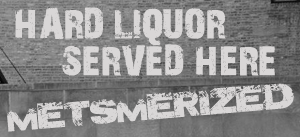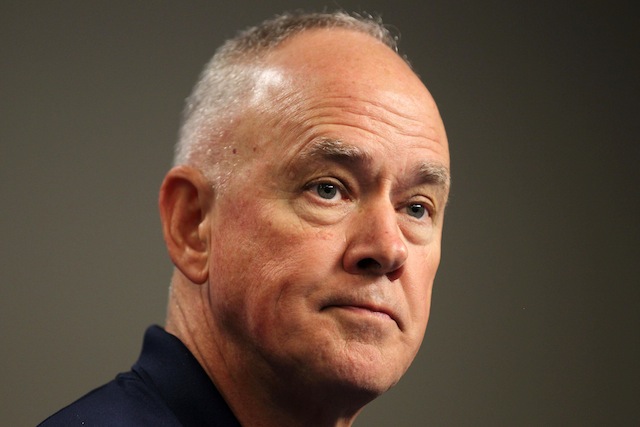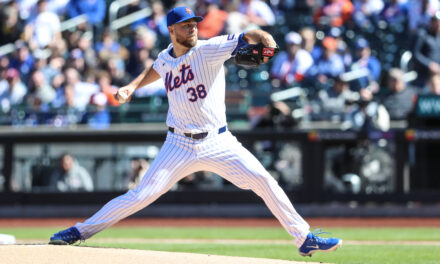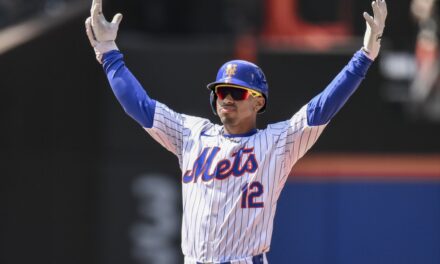Quick confession. I am not going to try and hide my biases simply to preserve some sense of false objectivity. After all, I’m not a journalist. Outside of lying or fabricating data, I have no such pristine burden. What follows are merely opinions, extrapolations, ideas, personal conclusions. I was, however, determined to keep an open mind once I began exploring the data, to go wherever the data led me. I will leave it in your capable hands to decide whether I have been successful or not in this regard.
Another caveat: I am not by nature a numbers cruncher, and from my writing days, not the greatest editor on the planet either. But I have tried to be faithful to the data, and if I’ve missed something, I am certain it will be pointed out. It is, after all, a debate on successful modern team building, not a pedantic lecture.
I’ve written a few articles previously since joining MMO leaving no doubt as to my opinion about the direction of the Mets this off-season. Sadly as a fan, much as I want to jump on the band wagon as the 2014 season nears, it still feels too much like jumping back into the same surreal rabbit hole.
Before we get into the nitty gritty let me give the bulk of credit for the graphs below to an article I recently read, by Matt Swartz at The Hardball Times, dated April 3, 2012, titled ‘Free agent value and building teams from within’. It’s a terrific article, and I highly recommend a read of it to enhance some of the extrapolations of this one. I’ve taken the data he’s assembled, reformatted it a bit, and put it into an informal top ten of my own, which I based more heavily on the statistic I find most relevant in sports, wins and losses per season.
The foundational premise is that wins and loses are reflected in others statistics, like WAR, and by empirically applying the data a pathway to more wins can be reasonably established. I will not replicate the wonderful insights gleaned from this raw data by Mr. Swartz but rather borrow the data for a bit to draw some of my own conclusions.
Here’s a direct quote from his article: “The idea is simple: if you fill a team with fringe players available on the free agent market for the league minimum salary, you would win about 43 games and spend about $12 million. Therefore, a team should not be evaluated only on how many wins it can get beyond that baseline of 43, but on how efficiently it can use its resources to exceed that number.”
Consider this: from 2007 to 2011, nine of the top ten teams in terms of winning baseball games spent more for fWAR wins via free agency. As well, this group won four of those five World Series, had the top ten W/L records in baseball during that time, and made up 65 percent of the teams that made the playoffs. They also won 63 percent of the division championships during that time. Or to paraphrase one of Mr. Swartz’s conclusions, relying on a farm system is a good thing if winning isn’t the goal.
Before the off-season started, the GM admitted to needing to have the courage to pull the trigger, presumably on a game changer. His words—made a big deal of finally having to make his mark, put his imprint on this team, now three years out, so far, he’s flinched, at best. He didn’t make a significant trade with prospects for an established major league star—the kind of trade that takes guts and team building vision. He passed on both long term free agents that certainly would have helped (please, spare me the tears about years five, six and seven; win a World Series, and all that crap goes away instantly).
Again, it takes some guts to make a move like that. He did sign Granderson and his 1.1 WAR for $15 million, and another $27 million on two players that are hardly part of anyone’s team building plan, though Colon’s WAR is respectable if we are to base it on the one somewhat aberrational year he had last year, at age 40, which makes replication a stretch. Of course, it fails to replace Harvey’s 5.2 WAR of last year, but in fairness, if bridging to Harvey’s return is the only goal of this signing, it probably will accomplish a large part of that (and feels a lot like treading water to me).
Despite the rhetoric, the Yankees don’t appear to spend as recklessly on free agents as some MMO posters would have us believe. The Yankees averaged 96 wins per season from 2007-2011, and won one World Series. As a Mets fan, who watches just about every game, I think I can point out this fact without having my loyalty questioned that in prospective to the Yankee’s success over this time period alone, the Mets have only four 96 plus win seasons in their entire history, and only one more championship.
The Phillies, the Tigers, and the Cardinals, who it should be pointed out averaged 24.9 WAR wins from free agents, also spent big during the 2007-2011 seasons. The big bad Yankees, who are to some the polar opposite of the Cardinals, averaged 32.2 wins per season from the WAR of free agents they acquired. Even more importantly, the Yankees wins from the farm system was only 62, and yet they averaged 96 wins per season. The Rays had the lowest free agent WAR of 4.7, and of course, no World Championship. But shouldn’t that be the case when you pick in the top 6 every year between 2000-2008, with 3 top picks thrown in for good measure (turning into Price and Longoria)?
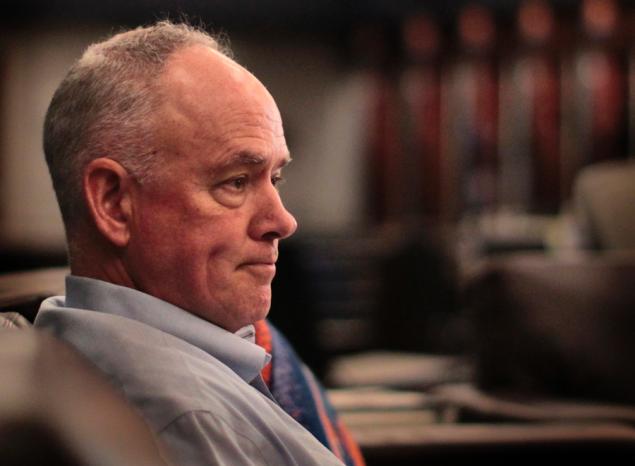
Let’s agree on this much, if possible. A top 10 farm system is good, up to a point—and that point on average is 69 wins per season from players not eligible for free agency. To get to 90 plus wins its going to take acquiring free agents, and making good trades with prospects under team control for established major league stars. Here’s what this data tells me: the teams that do well in the free agent arena, win more games, win championships. The teams that don’t, who fail here despite how well they control players from the farm system, don’t win. Wild free agent spending is bad, too, up to a point—and that point is when it costs almost $10 for each WAR win, which is where the Mets have unfortunately been too many times.
Here’s the top ten teams ranked in terms of wins / losses for 2007-2011 seasons.
1 Yankees 96-66
2 Phillies 95-67
3 Red Sox 93-69
4 Angels 91-71
5 Rays 86-76
6 Cardinals 86-76
7 Dodgers 85-77
8 Tigers 85-77
9 Rangers 85-77
10 Braves 84-78
Now here’s Team Dollars per WAR from Free Agents for Top Ten Winning teams:
Rk Team FA fWAR FA $/fWAR
1 Cardinals 24.9 $3.30
2 Braves 14.2 $3.60
3 Rays 4.7 $3.80
4 Rangers 12.7 $4.00
5 Red Sox 22.8 $4.90
6 Phillies 18.9 $5.40
7 Tigers 15.1 $5.40
8 Yankees 32.2 $5.6
9 Dodgers 13.8 $6.30
10 Angels 14.3 $6.90
Here’s the Non-Market Players ranking of Top Ten Winning Teams without FA WAR:
Non-Market Players
1 Rays 81-81
2 Angels 77-85
3 Phillies 76-66
4 Rangers 75-87
5 Tigers 70-92
6 Red Sox 68-94
7 Dodgers 67-95
8 Braves 67-95
9 Cardinals 63-99
10 Yankees 62-100
The World Series Winners from 2007-2011, with their FA fWAR:
Red Sox 22.8
Phillies 18.9
Yankees 32.2
Giants 12.4
Cardinals 24.9
What does this tell me? That four of the teams with the most wins in this time period spent heavily on free agents … to augment WAR from players under team control from the minors. The Giants, by the way, were no slouches themselves in spending on free agency. The A’s, for what its worth, spent the least in baseball, 3.5 for FA fWAR, at the worst cost of $13.20 (which to me indicates that tentatively dipping your toe into free agency, and not adequately committing payroll to it, or being bold and aggressive in free agency spending leads to very lousy differentials / results.
Obviously, Mr. Swartz digs a little deeper, and makes much more of a statistical science out of it. What I found fascinating, and why I went by top ten in wins as the standard, is that there is clearly evidence to suggest, as logic would have it, that building a strong farm system, and being bold and aggressive in the free agent market are crucial components in modern team building.
To me, this analysis strongly suggests the lie that Moneyball is today. The data also supports that poorly managed farm systems can be outspent through free agency—see the Yankees, and surprisingly, the Cardinals, who were just a tick ahead of the Yankees in lowest WAR from controlled (farm system produced) players. It also seems fair to say that the Rays, while the standard for building farm systems, is significantly lacking in its ability to participate in a meaningful way in the free agent market, as no World Championships might attest.
As for the Mets, they actually spent 13.2 on FA fWAR, but did so at the 27th worse cost of $8.10 (which is part of the horror for Mets fans = a legacy of spending on the wrong free agents at the wrong times, with a few notable exceptions). So wiser free agent spending is definitely in order, and in some cases extending out contract years (taking some risk for greater reward) for the right free agent will be required. Rather than damn the process because of previous incompetence, the Mets need to get financially to the point where they can aggressively pursue free agent spending again, at the level the data suggests brings a successful championship outcome. Of course, I think we all agree they need to do a much better job of it, on all accounts.
Now agreeing on the right GM to get us there, well, that might be a trickier business but should continue to provide sufficient fodder for MMO debate.
